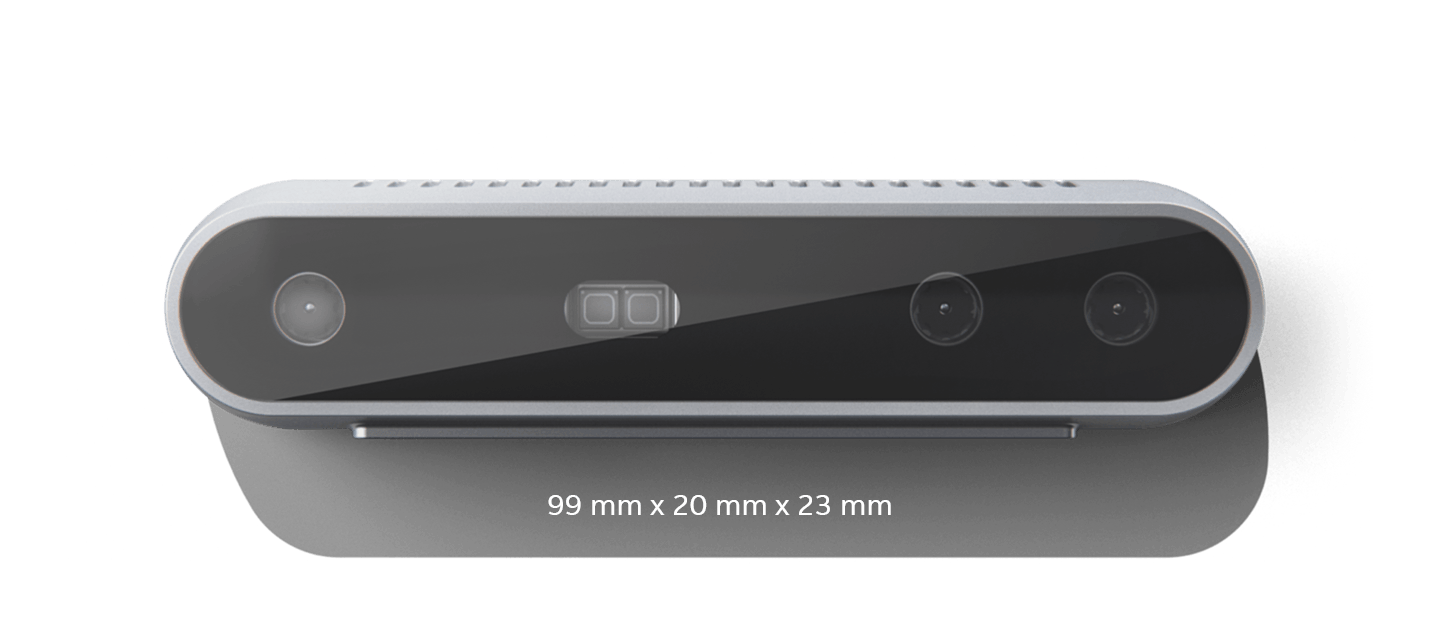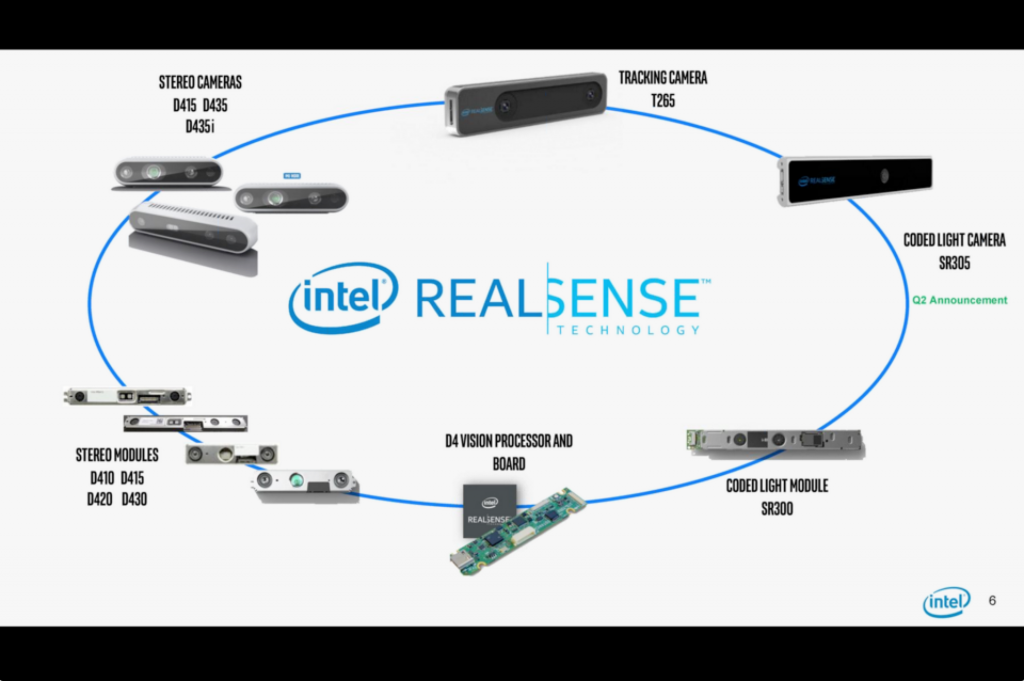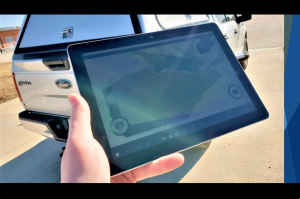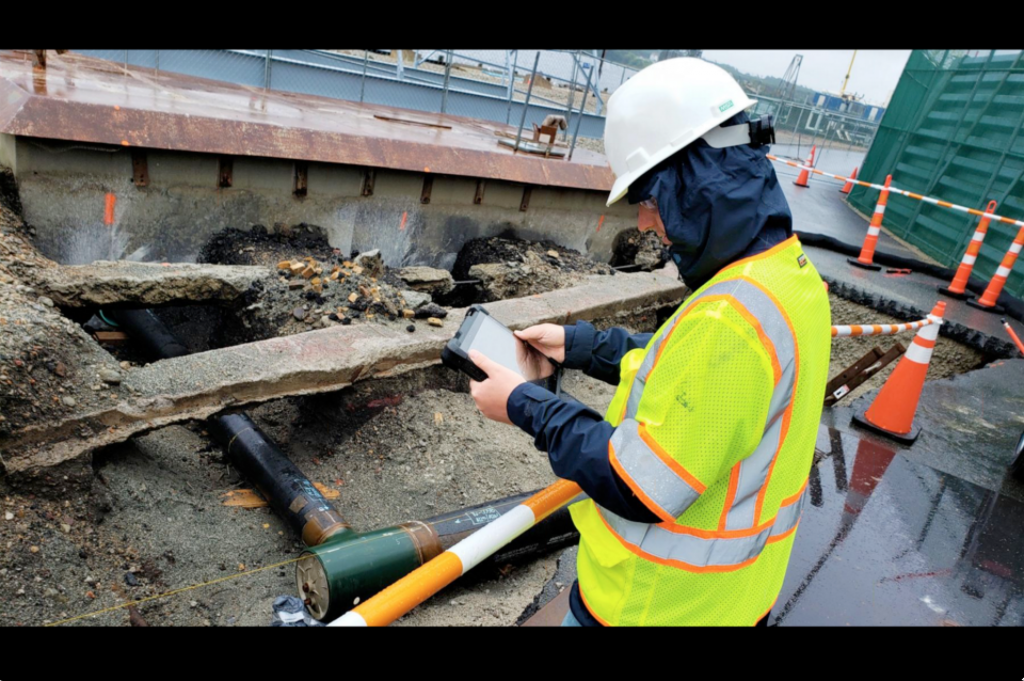When the Massachusetts Department of Transportation began an extensive rehabilitation of the historic Longfellow Bridge from Boston to Cambridge in 2012, Swedish multinational construction and development company Skanska began using the DotProduct handheld scanner to capture steel plate geometry for the fabrication of replacement steel. Hand 3D scanning turned out to be not only ten times faster than manual measurements, and it also improved the quality of the replacement steel fabrication. In some areas, 3D scanning is slowly changing the way businesses tackle leading projects around the world. And in a race to develop user-friendly 3D scanning technology, companies have been partnering to make their product better, faster and more reliable when it comes to capturing reality. DotProduct’s Dot3D -one of the firm’s professional handheld 3D capture solutions- joined forces with Intel RealSense last year to include depth cameras for capturing 3D scans directly into Dot3D tablets and PCs, including Intel’s RealSense platform to their 3D scanner software. The combination may help users capture real-time 3D data, making both indoor and outdoor 3D capture now possible.
Intel’s RealSense D400 Series depth cameras use stereo vision to calculate depth, overcoming the daylight limitations typical of infrared sensors. This opens up a wide range of applications for DotProduct customers previously hindered by sunlight limitations, allowing for real-time capture of dense, full-color 3D point clouds in a wide variety of environments. From construction to crime scene mapping, utility documentation and archaeology, the applications could be extensive.
“At Intel, we are trying to bring Sense to all the devices so that they can perceive the world in the way that we perceive the world, we believe this is the best way of making devices smarter and more useful to the consumer. To get there, we are looking at all the different segments and analyzing where we can add value and we are really targeting vision, which is the next natural step for this devices, and where we have our Real Sense technology,” said Brian Pruitt of Intel’s RealSense team during a Webinar hosted by Dot3D.
RealSense has been around for over 10 years and today they have cameras in different markets like 3D face authentication and access control, robotics, drone collision avoidance, people tracking, outdoor mapping, surveillance and security systems, AR/VR, inventory management, 3D scanning and dimensioning. Their mission is to enable their partners to build high volume products powered by the best-in-class RealSense 3D technologies.
Pruitt went on to say that the RealSense team “puts together a great set of products to meet all the needs, starting off with our cameras, which are self-contained, easy to use and allow the developer to plug it into a device and see if the camera is going to work in the environment within five minutes after it is taken out of the box.” Whether the end-user wishes to use the camera on their product or embed it into their product, they both work as well. “The D4 vision processors are the brains, it’s our IP on how we calculate depth, made up of a very powerful processor so that if one of our partners decides to build their own 3D camera they can and they can use our chip to do the calculations,” he continued.
To make all this work RealSense has a cross-platform SDK, which allows users to start working with any of their cameras and move to another camera, and the design is forwards and backward compatible so that the code being used today with the camera doesn’t become obsolete, and it can go from generation to generation of camera as Intel improves the technology. Pruitt also gave a sneak preview of the SR305 Coded Light Camera which has not yet been announced but will be launched sometime this year and will be a full prototype camera based on technology previously used on a developer format.
Dot3D Scan currently supports the Intel RealSense D415 and D435 depth cameras and also D410 depth module and additional cameras will be supported as they become available. All these cameras can be bought straight from Intel’s online site, starting at 150 dollars, a great price for the D415. Dot3D has two options for their customers, Dot3D Scan with unlimited scans of up to 20 million points, 3D cropping, measurement, annotation, optimization, and more, and Dot3D Pro to capture larger scenes and use professional features including survey control, Autodesk ReCap export, and append. One of the great benefits of pairing Dot3D with Intel’s new RealSense tech is the affordability factor, not a minor detail, considering 3D scanning options tend to run really pricey, but this option could be available for under $200, making it a better choice for consumers. But this is definitely not the first company to use Intel’s technology, back in 2015 Razer and Intel came together to work toward a virtual reality-enabled device based on Intel RealSense tech that offers next-level capabilities to the virtual world. Around the same time, Russian app development company itSeez3D announced that they had successfully ported their mobile scanner application to the Intel RealSense platform.
Outdoor 3D capture is one of the top benefits of the RealSense (the D415 in particular), versus any of the products in the past. According to Chris Ahern, Marketing, Sales & Product Manager at DotProduct, “we have always been limited in terms of outdoor 3D capture because our sensors have been heavily relying on infrared which gets washed out on a sunny day, however with the assistive stereo of the RealSense depth cameras we are excited to see that it works great, so this opens up a lot of applications that have been closed doors to us in the past.” During the webinar presented by Dot3D, Ahern did a live daylight 3D scan of a sample field pipeline, using RealSense’s D415. After capture, Ahern moved onto optimization for cleaning any noise recognized from the data, done within just a few minutes and with ease, although the output did require some manipulation to get the acceptable quality required.
A lot of applications are now available with Intel’s RealSense cameras. Another powerful aspect of the RealSense technology is that it is so small, lightweight, making it easier to document info that has never been done before. A lot of possibilities open up like daylight capabilities for accident reconstruction applications, it’s a nice fit in terms of crime scene mapping and forensic reconstruction for outdoor spaces, which were always limited since vehicles are some of the hardest objects to capture with laser 3D capture solution, especially on a sunny day. With RealSense this is now possible. The Windows platform also opens up devices with a lot more RAM, which allows capture of much larger areas in a single scan. Plus, no warm-up time is required with RealSense, the depth cameras are ready to scan when connected to the software, a big improvement compared to other scans which used to take up to 15 minutes to warm up. Although on the downside, there is no support for IOS devices like IPad or iPhone, its only Android or Windows. Ahern suggested that the new software on the Dot3D improves on tracking while scanning, “we are always tweaking our algorithms to get better and better track out of each particular device that we are using, and we are currently optimizing for the RealSense products which track really well and looking forward to taking advantage of the inertial sensors which will improve upon that even further.” The same goes for drift. The software is built-in intelligently to compensate for drift in the core algorithms and technology. Though if you are scanning larger areas the experts at Dot3D recommend the user takes advantage of the more advanced workflow.
Dot3D and Intel’s partnership will probably make the 3D scanning experience much easier for end-users, with lots of opportunities in terms of inspection works in the oil and gas industry, construction, engineering, crime-scene forensics, archaeology, digital heritage archives, and even real estate, trying to replace what would otherwise be a tape-measure-sketch pad type situation. The Dot3D scanning experience is of great value for professional firms as a portable, easily deployable solution that can be used alongside some of the more high-end solutions. But in the traditional laser scanning world, is there such a thing as a perfect scanner? Most 3D scanners are difficult to use as is their software, having to repeat scans dozens of times before getting just what you want, setting up scans, scanning and repairing files is getting easier but still requires skill as well. Scanning solutions can be great for scanning two-bedroom apartments in under 15 minutes, but with larger areas, it might not be that easy.
Subscribe to Our Email Newsletter
Stay up-to-date on all the latest news from the 3D printing industry and receive information and offers from third party vendors.
You May Also Like
3D Printed Heat Spreader Could Improve Efficiency of Electronics
The low-hanging fruit for decarbonization has long been improving the efficiency of existing systems, hence the justification for LED lights and ENERGY STAR certified appliances. While such minor moves are...
3D Printing News Unpeeled: Marine Gearboxes, 3D Printed Motors and $1.7 Million in Seed Funding
UK based Equipmake just released their Ampere-220 e-axle system. The system, which is meant for high performance electric cars, was similar to one released on the Ariel HIPERCAR. It has...
CEAD Unveils 36-Meter-Long 3D Printer for Abu Dhabi’s Al Seer Marine
CEAD, a Dutch original equipment manufacturer dedicated to large-format 3D printers, has unveiled what it claims to be the world’s largest robotic arm-based 3D printer. At 36 meters long and...
3D Printed Biocomposites Could Help Reduce Marine Plastic Pollution
Concerns about the impact of plastic litter and microplastics in the oceans are at the forefront of environmental study. For decades, the marine environment has suffered from the degradation of...









































